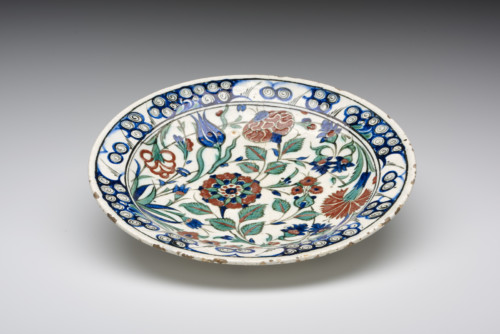
“Flower Power” Takes Over San Francisco’s Asian Art Museum
Flowers and their symbolism in Asian cultures is the theme of “Flower Power” at San Francisco’s Asian Art Museum— a new exhibit opening June 23. The exhibit tells the stories of six flowers– lotus, cherry, plum, chrysanthemum, rose, and tulip– in paintings, ceramics, textiles, and sculptures from China, India, Thailand, to Turkey over the course centuries, an an approach way that tells the narrative of these flowers across time and culture.
The importance of flowers in Asia goes way beyond their mere beauty. “If you have two pennies, spend one on a loaf and one on a flower. The bread will give you life and the flower a reason for living,’” says one Chinese proverb.
The exhibit’s timing is in concert with the 50th anniversary of the “Summer of Love,” when Scott McKenzie’s 1967 song famously suggested that you visit San Francisco with “flowers in your hair.”
Since the lotus rises pristine from swampy water, opens at sunrise, closes at sunset, and has seeds that can be viable for over 1,000 years, the flower has come to symbolize transcendence, creation, and regeneration. In Buddhism, the heart of every being is like an unopened lotus, while reaching enlightenment resembles the lotus blooming. Buddha is often seated on a lotus-shaped throne, like the 9th-century Indian stone sculpture statue in the exhibit. In a 13-foot painting on wood from Thailand, Buddha sits calmly as an army led by an elephant-riding demon threatens to attack him on one side; on the other, their weapons sprout lotus blossoms.
In Himalayan countries, the Buddhist goddess of compassion, White Tara, emerged after a lotus opened in a lake, created by the tears of a deity moved by the suffering of the world. So in a Tibetan 19th-century painting, she’s holding a stem with three lotus blossoms. In China, it’s the flower of summer, as seen in a 17th-century Chinese painting on silk, which depicts pink lotuses at various stages of bloom.
Plum and cherry mean transience of life and beauty in Japan, China, and Korea. Plum is the first plant to bloom in late winter and early spring, so it also signifies perseverance and endurance, as a Korean 19th-century lacquered wood box inlaid with a mother-of-pearl plum tree, gnarled but showing vital new growth, demonstrates. Plum, combined with pine and bamboo in a “three friends of winter” design, is also in the Japanese silk kimono on display, representing good fortune and longevity.
Plum and moon combinations also became popular: a 15th-century lacquer tray with a mother-of-pearl plum blossom and crescent moon from China was inspired by an 11th-century Chinese poem (“The flowering plums’ bones are of jade and snow, and their souls of ice / In their multitude the blossoms seem like moonlight hanging from the trees”).
But plum can also represent a beautiful woman. “Plum vases,” shaped like the ideal woman’s body (narrow short neck, plump bosom, concave stomach), for holding one plum branch, were very popular in 10th- through 13th-century China: a Song Dynasty ceramic vase adorned with black graffito is an example. In Japan, viewing cherry blossoms is also a national pastime: a 17th-century screen with ink and gold on paper, where viewers are entertained by dancers, illustrates this concept of Sakura beautifully.
In East Asia, Chrysanthemum represents reflection and also longevity, due to its long blooming season. A Japanese lacquer incense box depicting gold and red chrysanthemums in bas-relief is on display, as are similar invaluable artifacts. In China, mums combined in a “100 Flowers motif” with many other flowers symbolize good fortune. An 18th-century Chinese vase shows such a profusion of flower species that it reminds viewers of flower-abundant 1960’s psychedelic art.
An 18th-century Chinese vase shows such a profusion of flower species that it reminds viewers of 1960’s psychedelic art.
Rose and tulip signify perfection and refinement. In Muslim art, the rose even came to symbolize the prophet Mohammed. In a 17th-century Indian painting, a Mughal prince holds a dainty rose in one hand while his other hand rests on his sword as roses adorn his sash, embodying the ideal ruler: an aesthete and a warrior. Tulips were ubiquitous in art in the Ottoman Empire; a 16th-century Turkish dish illustrating the theme depicts a stylized tulip, roses, and carnations.
Events on weekends and Thursday nights during the exhibit include ikebana lessons, tea-brewing with flower petals and herbs, bamboo art demonstrations, and much more. For more information, follow the Asian Art Museum on Instagram or check out their website.
Interested in learning more about floral motifs and/or botanical art? Check out our stories on the history of flowers in painting, Japan’s new “moss craze”, or the story behind Andy Warhol’s iconic flowers.






































